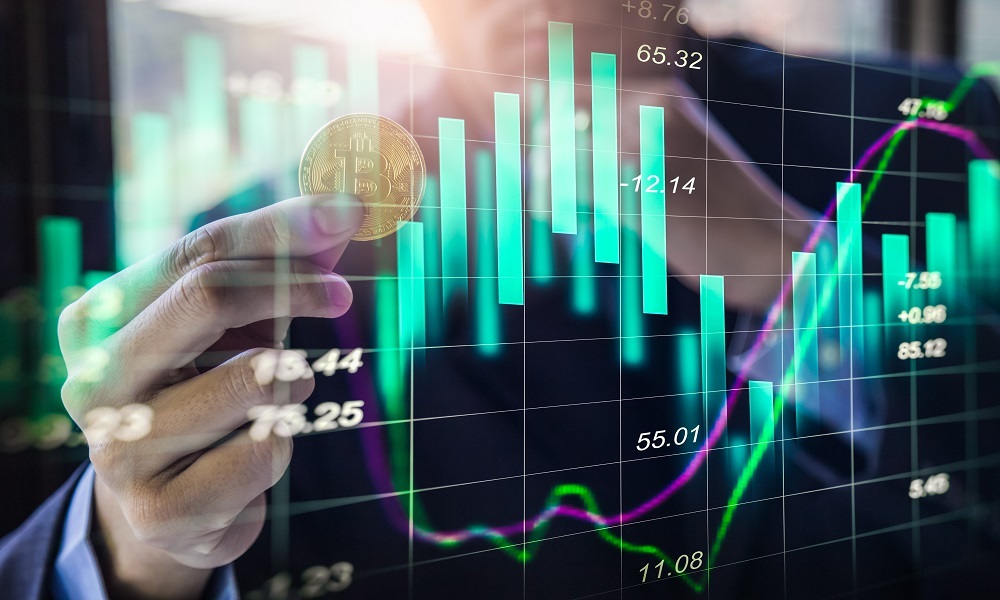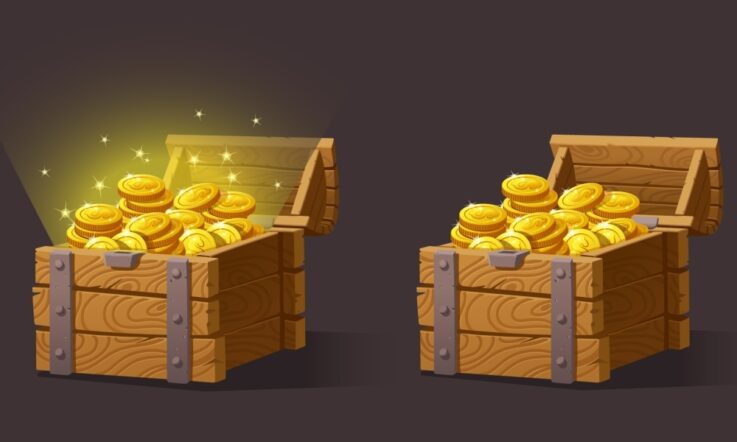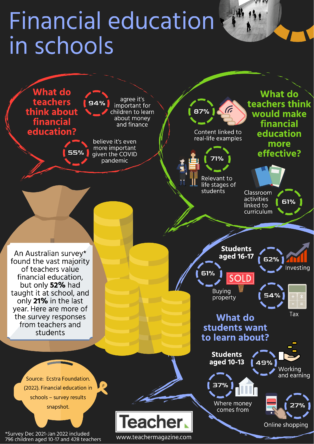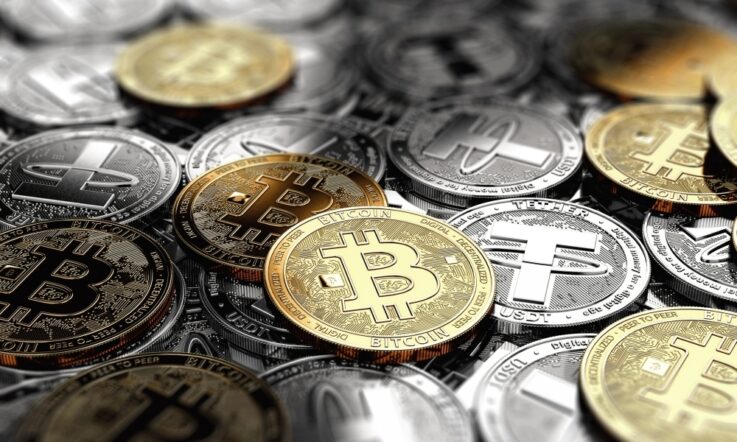In our recent work as part of Economics + Maths = Financial Capability, a research and engagement project, secondary Mathematics and Commerce teachers have reported that their students are interested to learn about cryptocurrency.
This is somewhat unsurprising given the ‘get rich quick’ hype and range of well-marketed trading apps luring investors in. While it is estimated that around 18 per cent of Australians own digital assets (Vickovich, 2022), more and more everyday Australians are curious, and looking to participate in the market.
In this article, we offer some simple orienting ideas to tune you into students’ learning needs in this area.
What is cryptocurrency?
A cryptocurrency is a form of digital asset that exists on high-powered computers solving complex mathematical equations. ‘Crypto’ refers to the various encryption algorithms and cryptographic techniques that provide secure online payment entries. Bitcoin, Ethereum and Dogecoin are examples of cryptocurrencies that are popularly traded by investors.
Risk, reward and regulation
Trade of cryptocurrency is a largely unregulated process, and this leaves space for risky dealings. Crypto-crime is on the rise, with scammers creating fake cryptocurrency trading platforms or fake versions of official crypto wallets to exploit victims. The Australian Competition and Consumer Commission reports that Australians lost $99 million to crypto-asset scams in 2021 (ACCC, 2022).
Investors, young and old, need to be educated, informed, sceptical, and resilient. High risk can equate to high rewards. Successful investors have both the appetite and means to take informed risks, knowing there’s a chance they’ll encounter volatility and maybe even sustain losses.
Where are students getting their information?
Many Australian 15-year-olds who completed the OECD PISA financial literacy assessment reported gaining financial knowledge outside the school environment, mostly from their parents or other adult family members, and the internet (Thomson, et al., 2020). In fact, students who reported receiving information about money management from their parents were up to three quarters of a year ahead in their financial literacy learning (Thomson, et al., 2020).
Research argues the important contribution of family, work and social networks to financial knowledge (see Salignac et al., 2020). As young people transition to adulthood, their family and social network remain trusted advisers, even when the quality of advice may be low (Marchant & Harrison, 2020).
In both mainstream and social media, there are stories of teen traders ‘getting rich quick’ (see Taylor, 2021). These teens tend to start with a small amount of savings and/or a financial boost from their parents, and market guidance from family and friends in the know.
Podcasts like Gen Z Money are making financial advice accessible. Platforms like TikTok make it easy for young people to spread their news (real and fake) with hashtags like #stocktok and #teentrading. Crypto fashion is also a thing, with tees featuring the Doge meme dog popular among the young.
In this context, schools and teachers have an important role to play. In the words of Michael Douglas’ character Gordon Gekko in the Wall Street movies, ‘The most valuable commodity I know of is information’.
The curriculum and the real world
In the Australian Curriculum: Economics & Business, Year 9 students learn to explain why and describe how people manage financial risks and rewards in the current Australian and global financial landscape.
However, the word ‘risk’ is not mentioned in the Australian Curriculum: Mathematics. Even so, teachers are encouraged to teach Mathematics through real world contexts. There is scope to explore investment-related risks and rewards within statistics and probability, as you teach students to read, interpret and make predictions about chance and data representations.
In Victoria, Victorian Certificate of Education (VCE) Study Designs in Accounting, Economics, and Foundation Mathematics provide further opportunities to gain an understanding of financial risks and rewards. Similar senior secondary studies exist in other states and territories.
Reading and interpreting data representations
As an example of a real world context, cryptocurrency offers a lot to explore with students economically and mathematically. It’s hard to keep up, let alone become an expert. The only way to teach in this space is to position yourself as a learner, and model learning alongside your students.
A good place to start is simply by watching, monitoring and discussing cryptocurrency price trends over time.
We suggest that you might form a coalition of Commerce and Mathematics teachers at your school to do this together with students. Here are three tips that might help you to establish a 10-minute classroom routine once a fortnight or month:
- iPhone users can access the Stocks app free. You and your students can create a customisable watchlist to monitor daily performance, and tap any ticker to see interactive charts.
- You can find tabulated cryptocurrency prices at https://www.gemini.com/prices. Ask students to compare the price, 24-hour change and percentage change in popular crypto assets, like Bitcoin, Ethereum and Dogecoin.
- You can access Alan Kohler’s reports for ABC News at https://www.abc.net.au/news/programs/kohler-report/. These quick videos offer a great way for you and your students to follow key investment markets.
Promoting critical thinking about investment markets
There are also some questions you can explore with your students in order to promote critical thinking about investment markets:
- What do you notice? What mathematical and financial language can you use to describe what you’re noticing? (trend, trajectory, rise, fall, boom, bust, crash)
- What mathematical calculations underpin this table, graph, or chart?
- Can you predict what might happen next?
- What might a skilled investor do?
- What do you wonder about? What questions might you pose?
We also recommend these podcasts to continue your learning about money and investing:
- Gen Z Money
- My Millennial Money
- She’s on the Money
- The Australian Finance Podcast
- The Pineapple Project
References:
Australian Competition and Consumer Commission. (2022, March 18). ACCC takes action over alleged misleading conduct by Meta for publishing scam celebrity crypto ads on Facebook. https://www.accc.gov.au/media-release/accc-takes-action-over-alleged-misleading-conduct-by-meta-for-publishing-scam-celebrity-crypto-ads-on-facebook
Marchant, C., & Harrison, T. (2020). Emerging adults' financial capability: A financial socialization perspective. International Journal of Consumer Studies, 44(2), 99–110. https://doi.org/10.1111/ijcs.12548
Salignac, F., Hamilton, M., Noone, J., Marjolin, A., & Muir, K. (2020). Conceptualizing Financial Wellbeing: An Ecological Life-Course Approach. Journal of Happiness Studies, 21(5), 1581–1602. https://doi.org/10.1007/s10902-019-00145-3
Taylor, A. (2021, February 14). Rise of the teen traders: How 15-year-old Sam made $10,000 from Bitcoin. The Sydney Morning Herald. https://www.smh.com.au/national/rise-of-the-teen-traders-how-15-year-old-sam-made-10-000-from-bitcoin-20210212-p57226.html
Thomson, S., De Bortoli, L., Underwood, C., & Schmid, M. (2020). PISA 2018: Financial Literacy in Australia. Australian Council for Educational Research. https://research.acer.edu.au/ozpisa/48
Vickovich, A. (2022, April 19. Fund managers take notice of $2.5 trillion market temptation. Australian Financial Review. https://www.afr.com/companies/financial-services/fund-managers-size-up-2-5-trillion-crypto-temptation-20220413-p5ad4x
How much do your students know about cryptocurrency? What about investment risks and rewards? How could you evaluate what misconceptions they might hold?
How much do you know about cryptocurrency, and investment risks and rewards? In what specific areas are there gaps in your knowledge? How could you begin to address these?



